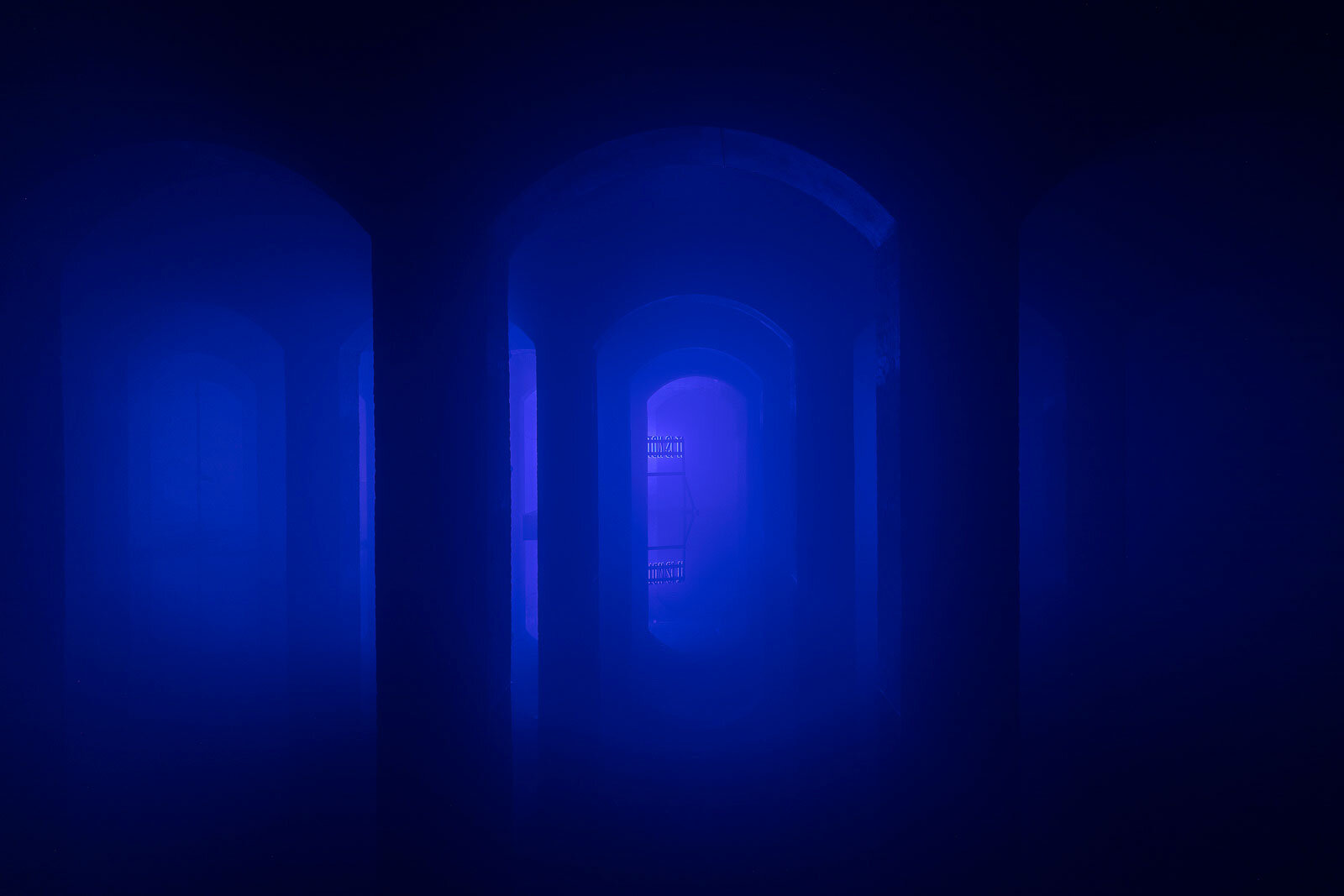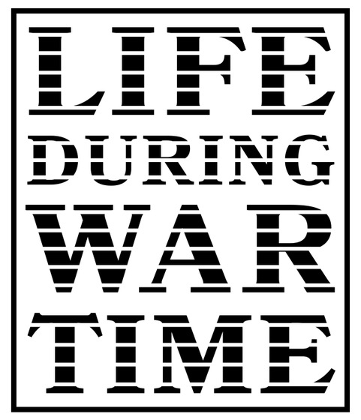
SUPERFLEX
The Anthropocene. Since the dawn of the industrial age, humans have littered the air with coal and diesel fumes, the oceans with plastic, pumped CO2 into the atmosphere, and raked fertilizers across the land. The impact of Homo sapiens on the earth has become so enduring it has compelled the world’s scientists to christen a new geological epoch. According to a new scientific consensus, the Anthropocene describes a period of less than 300 years during which human activity has been the dominant and, thus far, irremediably toxic influence on the planet’s environment and climate.
Enter humanity’s dystopian future as visualized by SUPERFLEX. In their laconically titled 2019 installation, It Is Not the End of the World, the Danish art collective present an underground environment flooded by rising tides caused by, among other recent climatic phenomena, the melting of the Greenland ice sheet. An event comparable in its destructive power to thousands of years of natural disasters—such as volcanic eruptions, earthquakes, and meteor impacts—the melting of Greenland’s ice will contribute to many coastal cities of Northern Europe being underwater by 2100.
According to SUPERFLEX: “We have created a surreal scenario, where climate change has altered society significantly. Humanity has come to an end and only the flooded remains are left.” Originally set inside an old water reservoir, It Is Not the End of the World models a watery future that includes an exact copy of the water closet (W.C.) found inside the Bonn, Germany, building hosting the United Nations Framework Convention on Climate Change (UNFCCC). Climate change is everywhere and omnipresent, SUPERFLEX tells us. In Barry White’s throaty formulation: humanity is no longer the first, the last, the everything.
— CVF, USFCAM
SUPERFLEX, It Is Not The End Of The World, 2019. Documentation of exhibition at Cisternerne, CPH, Denmark. Courtesy of the artists. Photographed by Torben Eskerod.
“Earth speaks to the humans: ‘I am the third planet from the sun. There are billions and more billions of other planets out there. Millions and millions of them could harbor life, but I will never know. They are all so immensely far away. Maybe I am the only one in the universe, but that is very unlikely: other planets will have other forms of life, that is different in ways I literally can’t imagine. I am excluded from knowing. But I am almost certain there is more life in the universe than mine. If life always finds a way here, then that must also be the case anywhere else. I am not that special.’”
— Danish sci-fi writer Peter Adolphsen wrote this text for the exhibition catalogue It Is Not The End Of The World.
“Earth speaks to the humans: ‘This is my sixth mass extinction. Of course, these events are sad in their own way—all this death and suffering—but they are inevitably followed by so much new life. Evolution really takes some weird twists after only a few million years. Things jump. I think back on those periods after mass extinctions as the best times of my life. All these voids in the ecosystems, brimming with future promise, just waiting to be occupied by weird little critters. Life is blind, but nevertheless always finds a way.’”
— Danish sci-fi writer Peter Adolphsen wrote this text for the exhibition catalogue It Is Not The End Of The World.
“Earth speaks to the humans: ‘You are funny little apes. Walking on your hind feet, almost no hair. Apparently, logically, you should not stand a chance: no claws or teeth worth mentioning, you can’t fly or dig tunnels, you’re not poisonous, you can’t spin webs, you don’t eat most greenery and can’t process dirt....[You] swim very poorly and are slow runners, but you can run for quite a while, you have stamina and resolve, I’ll give you that. That was the advantage when you began. Later your inventiveness enabled you to compensate for your shortcomings a thousand times over. I think it is safe to say that ballistic missiles beat teeth and claws every time.’”
— Danish sci-fi writer Peter Adolphsen wrote this text for the exhibition catalogue It Is Not The End Of The World.
SUPERFLEX, It Is Not The End Of The World, 2019. Documentation of exhibition at Cisternerne, CPH, Denmark. Courtesy of the artists. Photographed by Torben Eskerod.
About SUPERFLEX
(1993)
SUPERFLEX is an art collective founded by Bjørnstjerne Christiansen, Jakob Fenger and Rasmus Nielsen. Through a diverse practice that spans a wide range of media and interests, they challenge the role of the artist in contemporary society and explore the nature of globalization and systems of power. SUPERFLEX describe their work in terms of “tools,” thereby suggesting multiple areas of application that can be further modified and redefined by various users. “Tools” are proposals that invite people to actively participate and communicate; when put into use, they carry a potential to affect or influence social or economic situations. SUPERFLEX’s practice also includes music production, paintings, sculptures, public art, and installations. Integrative and multidisciplinary, their works subversively address an array of socio-political issues and cultural concerns. One of SUPERFLEX’s recent projects is One Two Three Swing!: a large-scale public space installation that directly confronts society’s apparent state of apathy with the extraordinary potential of collectivity. Originating at Tate Modern’s Turbine Hall, this installation has appeared at many locations throughout the world. From 2018-2020, SUPERFLEX was the Expedition Leader of the three-year fellowship program at the TBA21-Academy (Vienna, Austria), an institution that merges artistic and scientific research in an attempt to reach an alternative understanding of marine species.
Artist website: superflex.net
Artist Instagram: @superflexstudio
Exhibition website: cisternerne.dk



